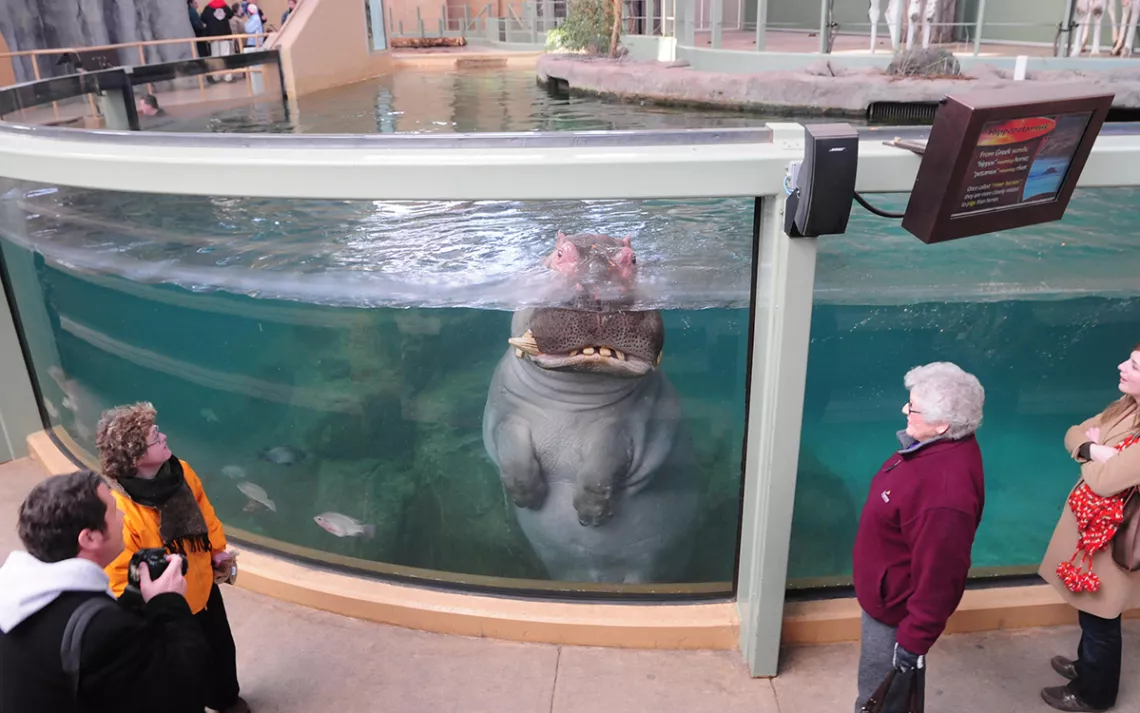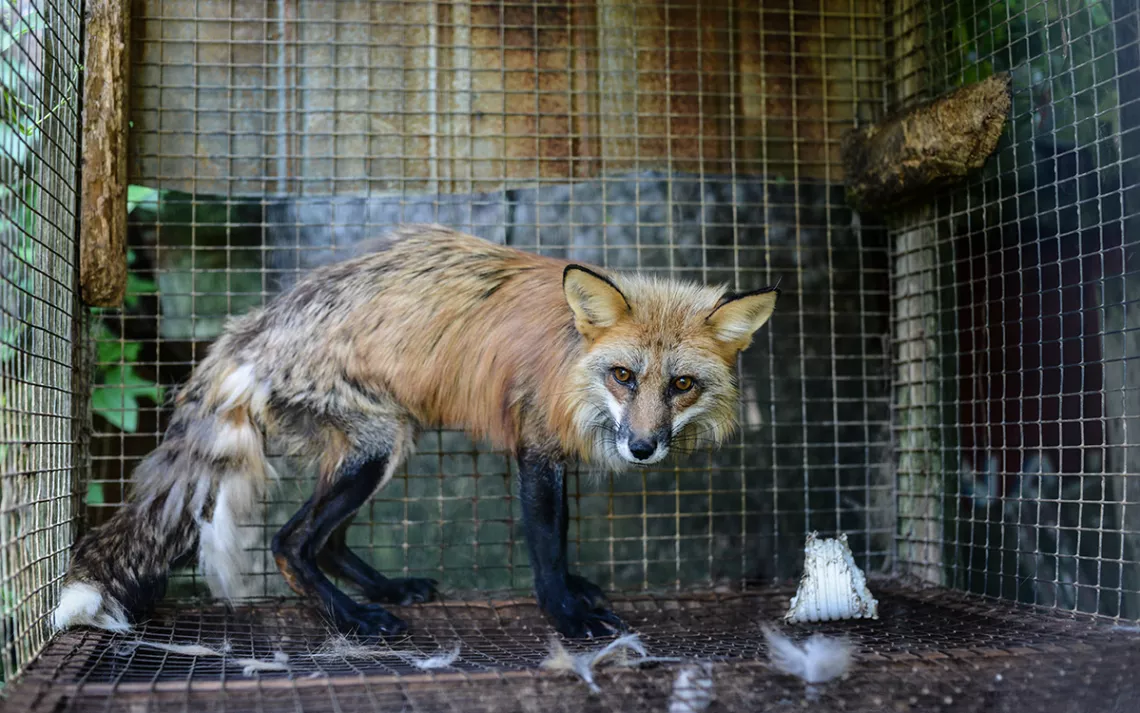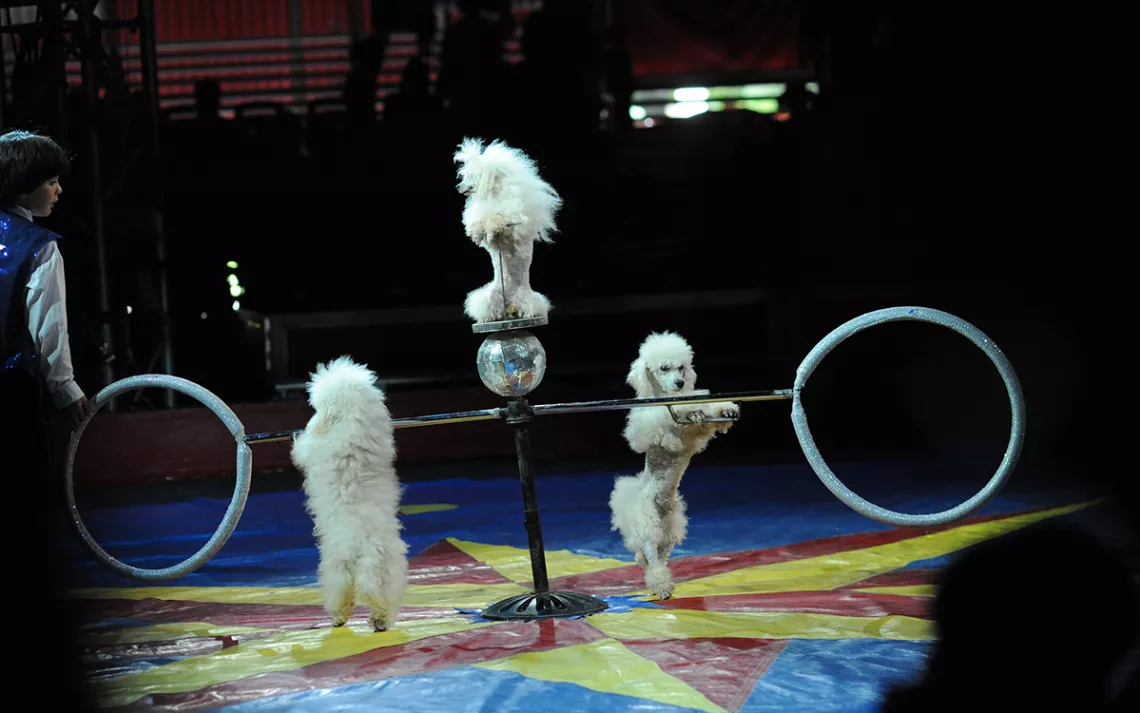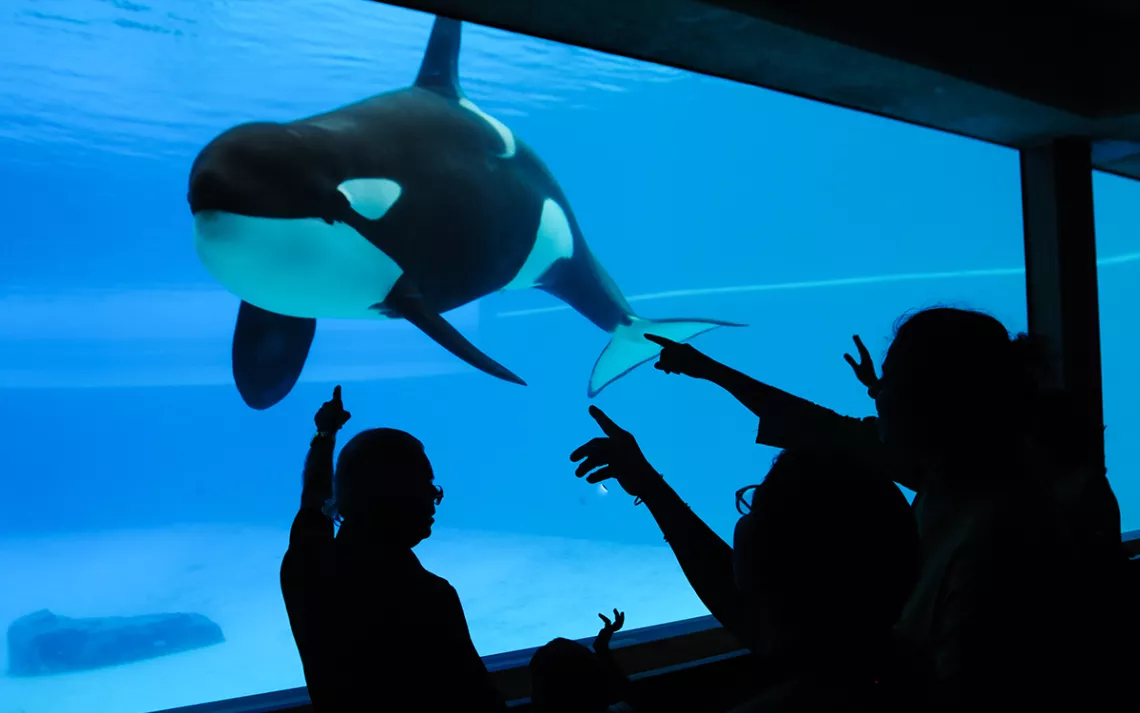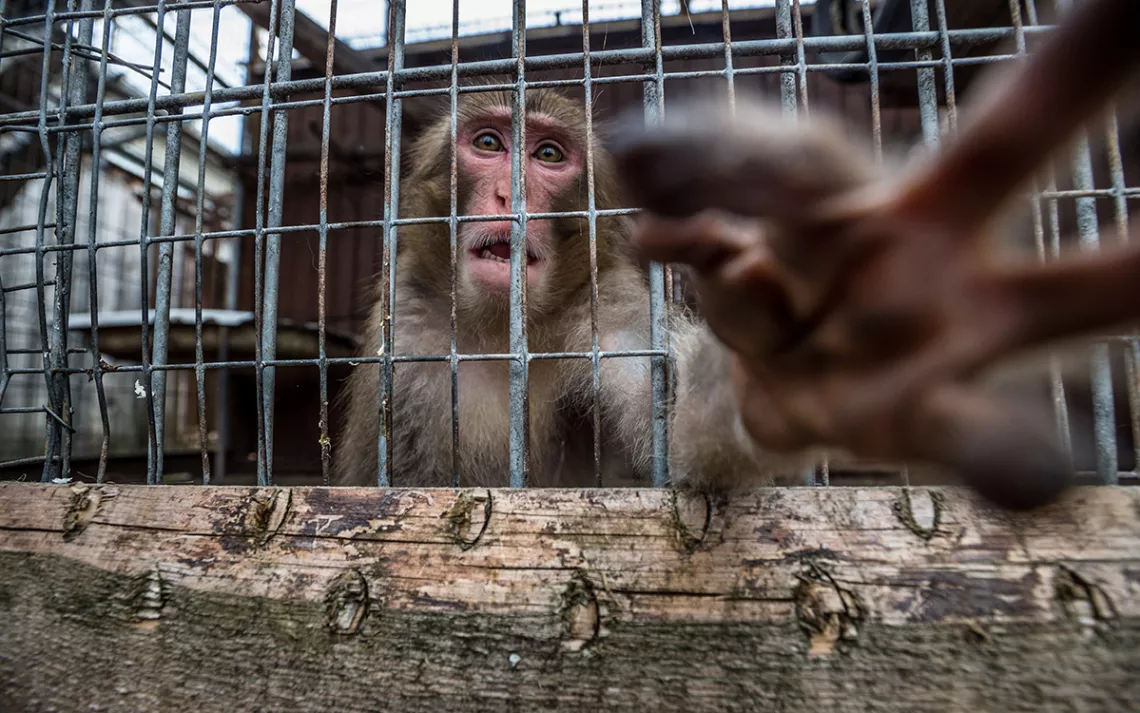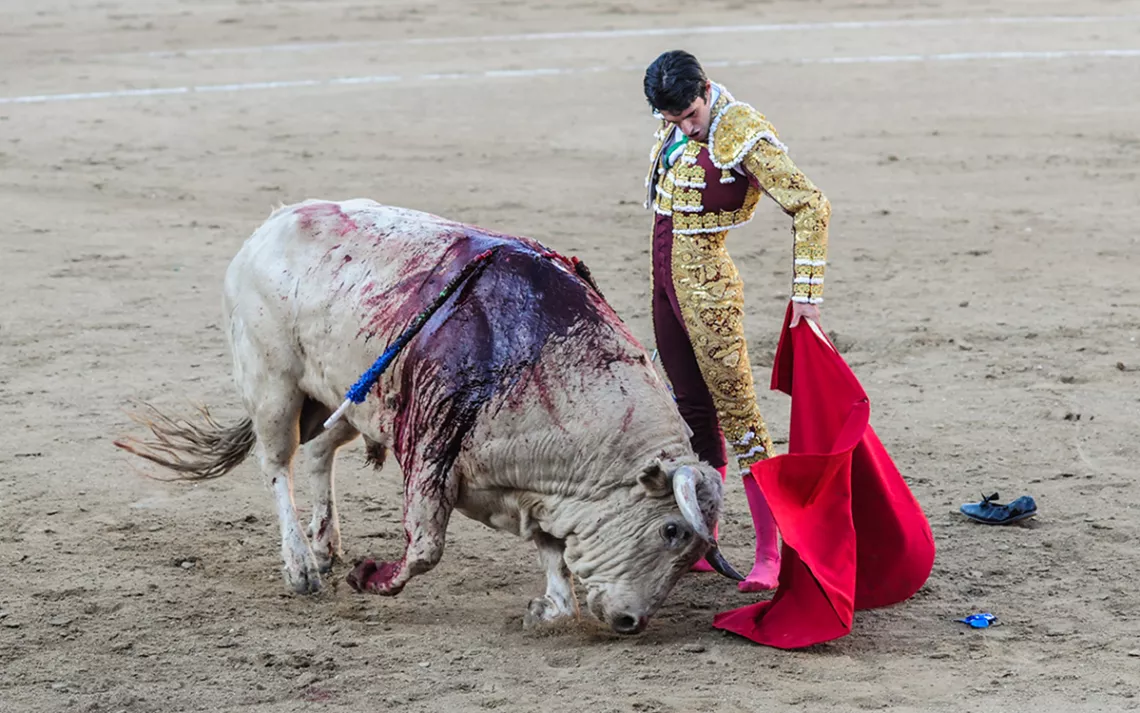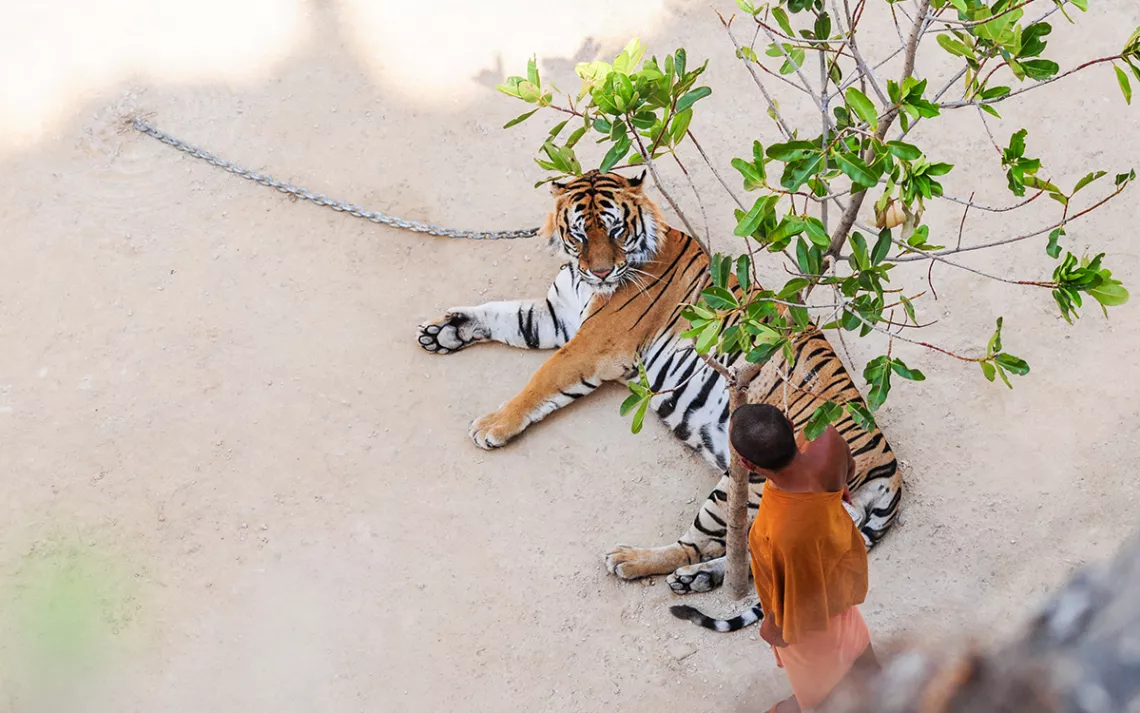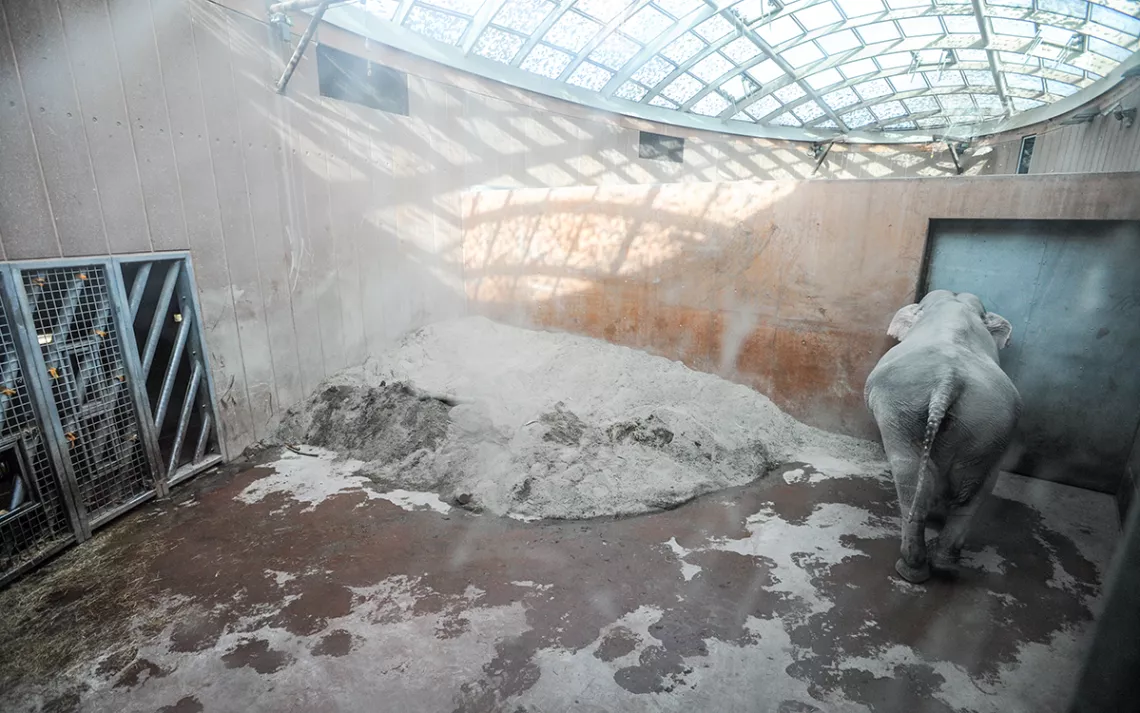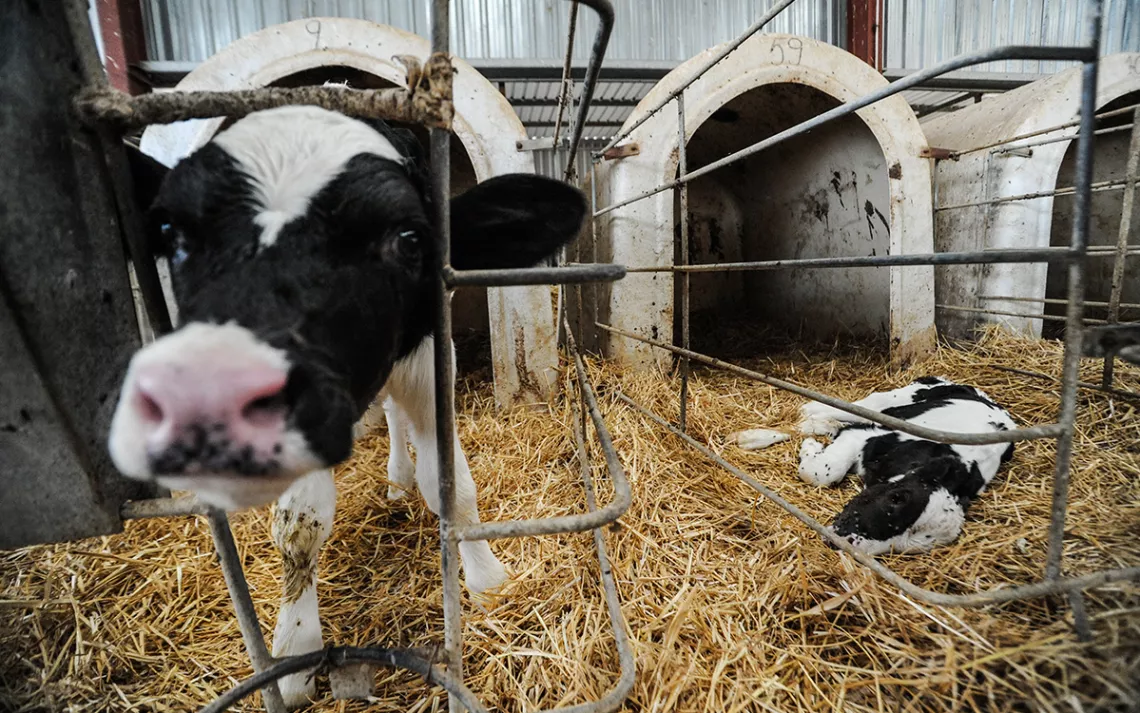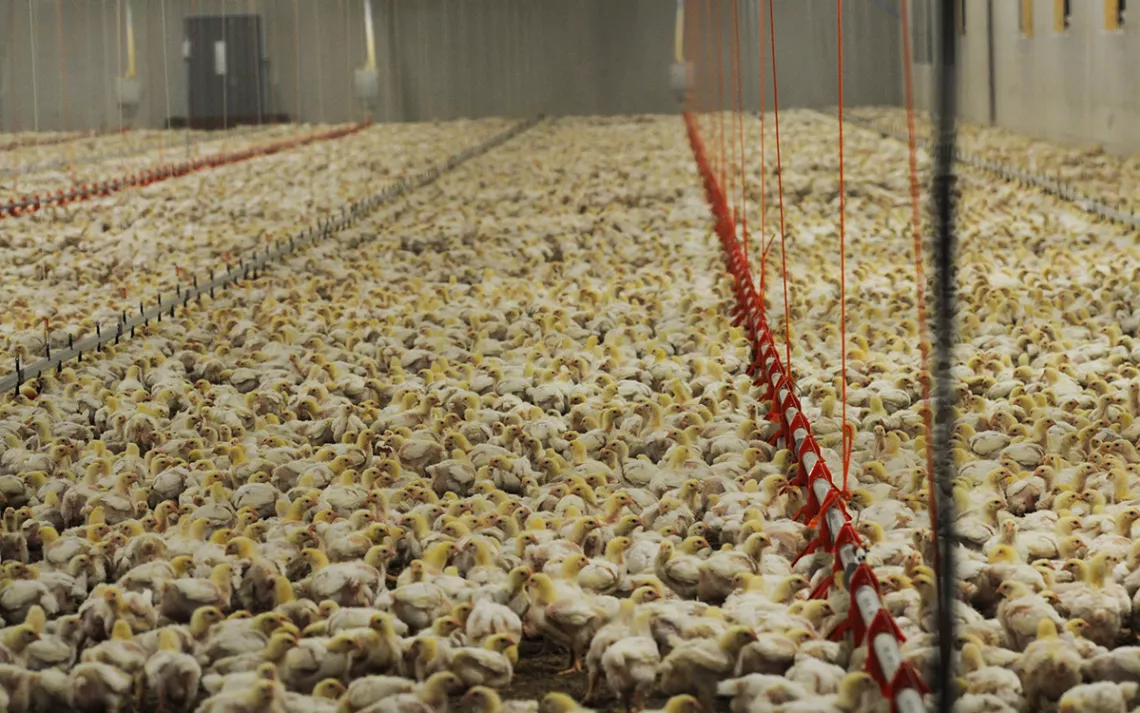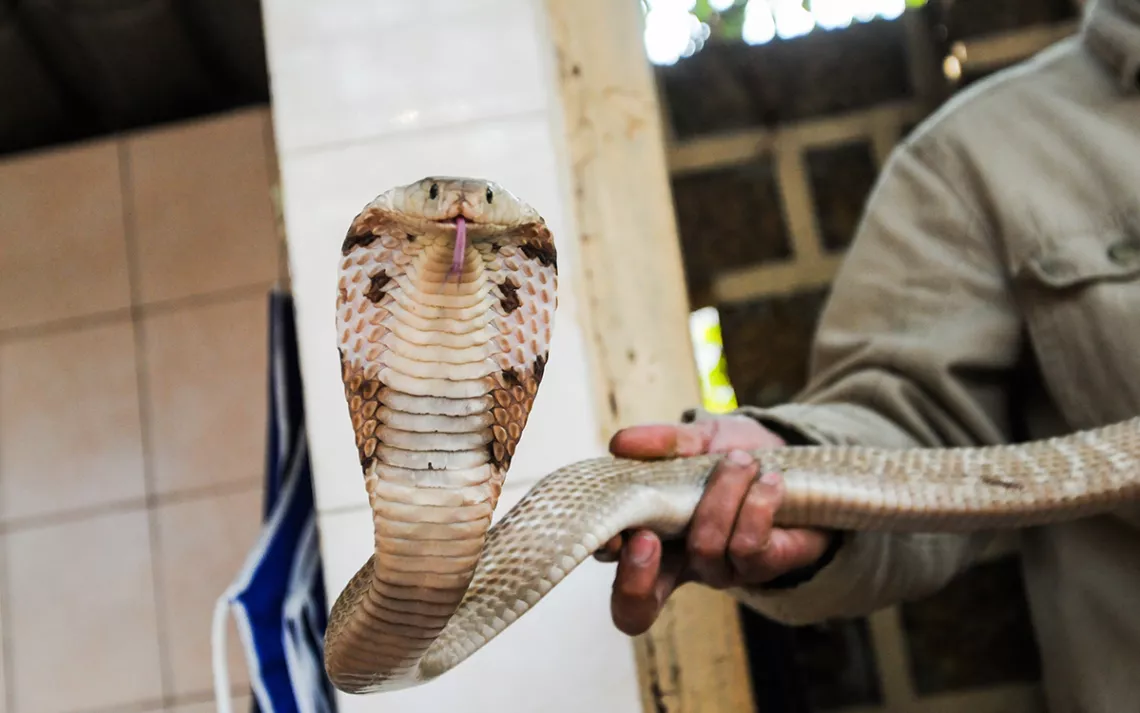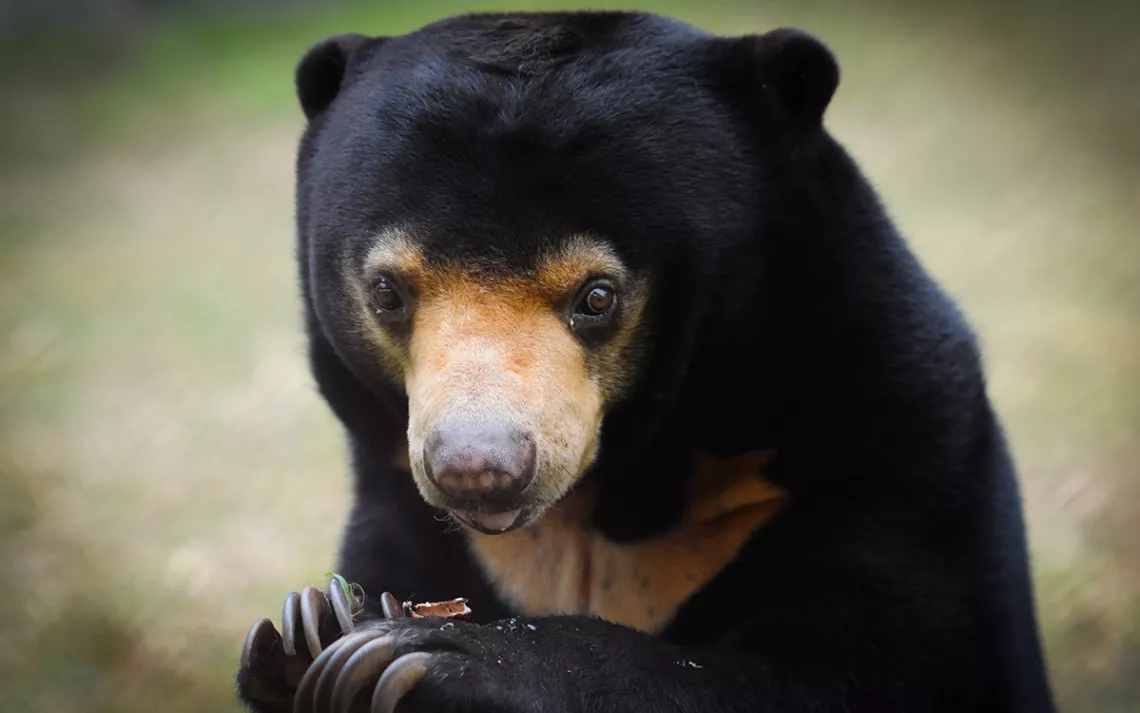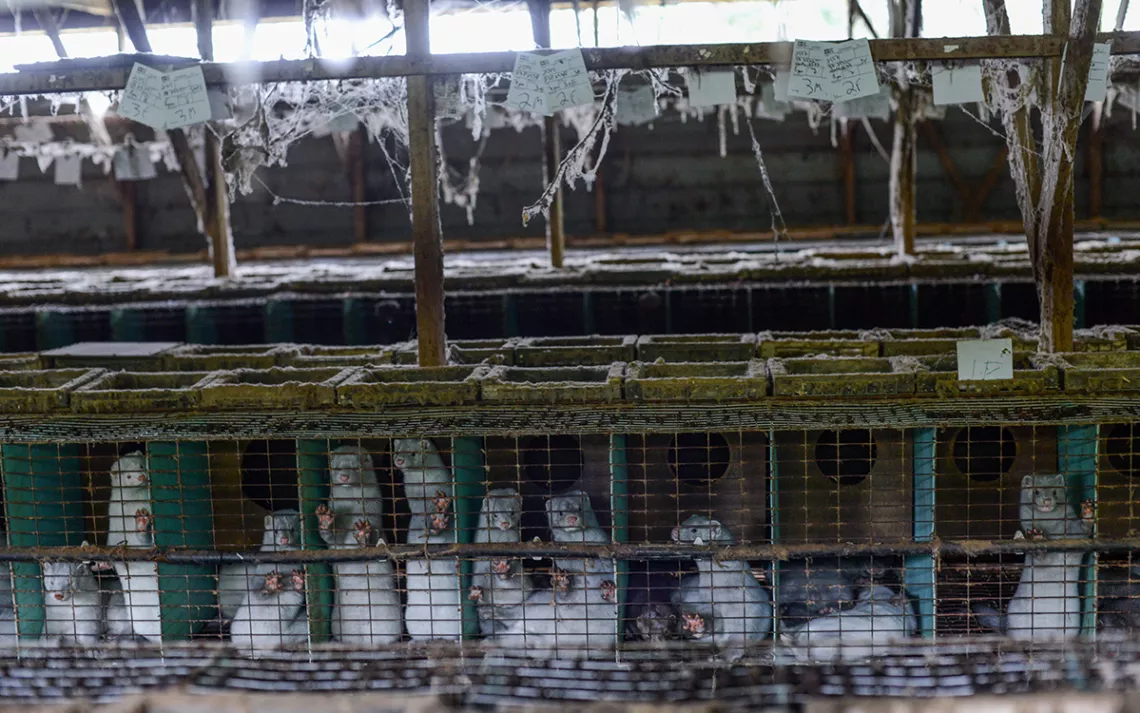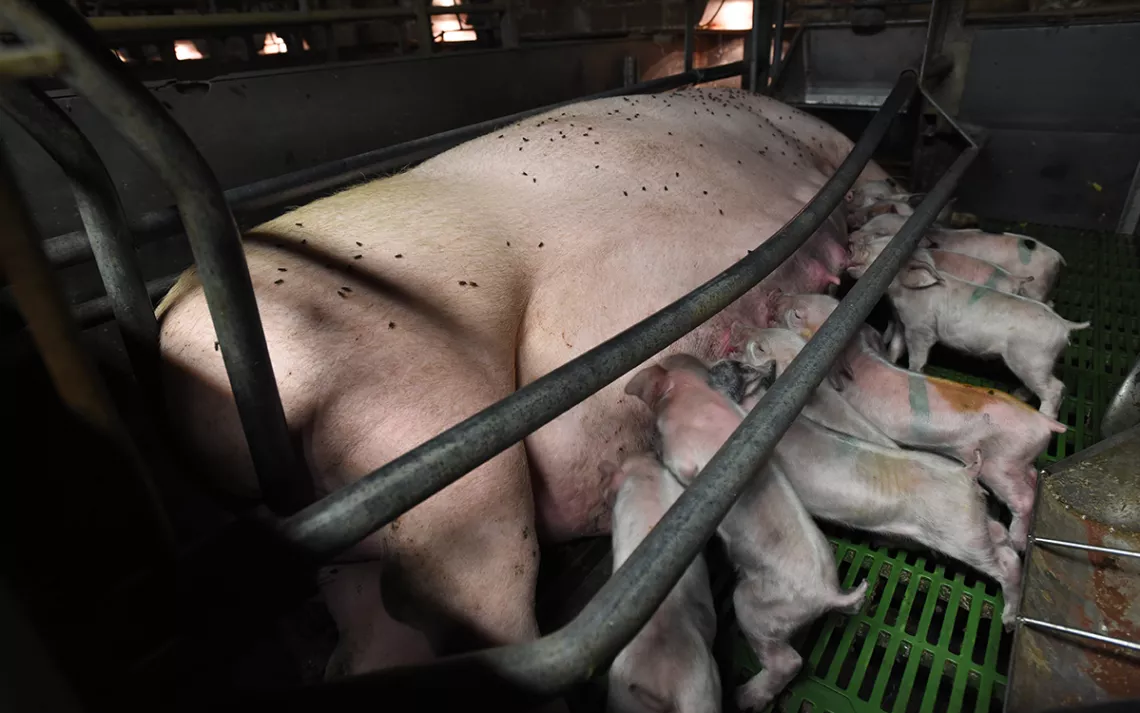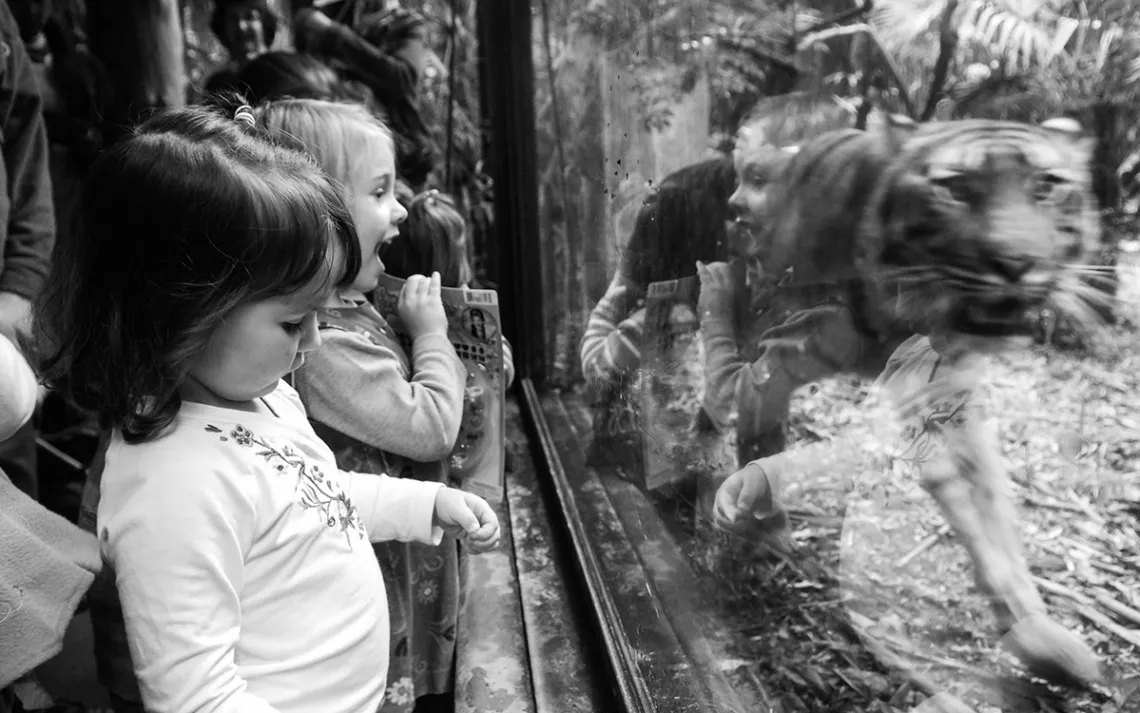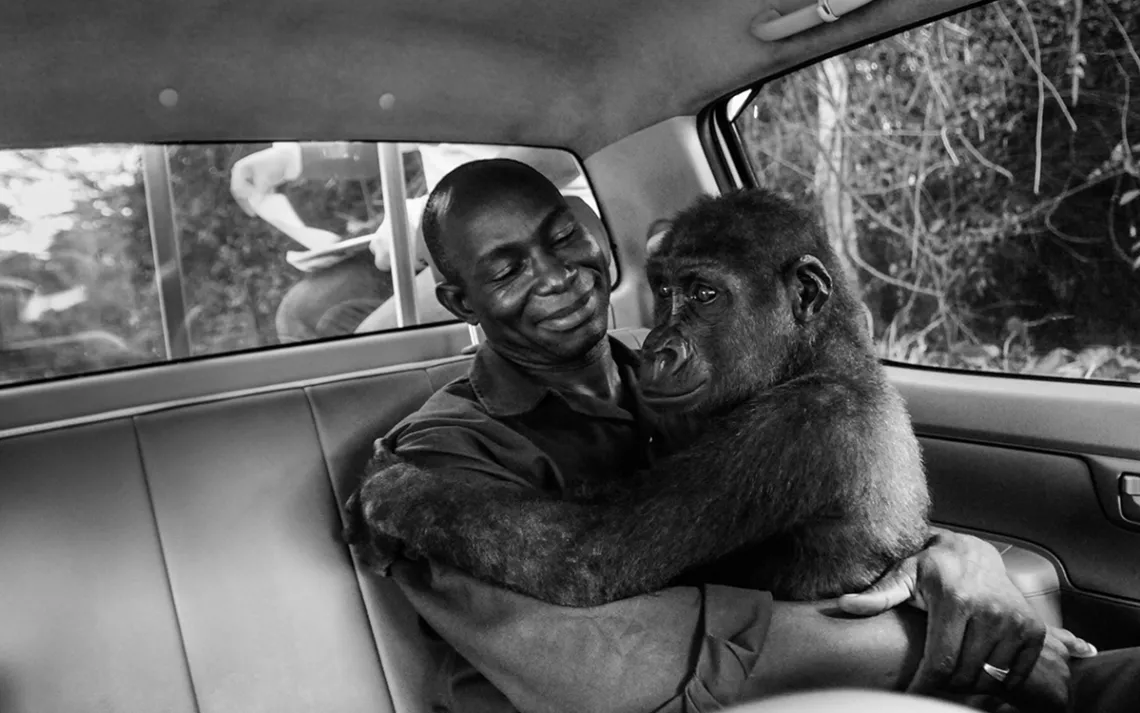Jo-Anne McArthur’s Camera Is a Tool for Animal Rights Activism
Inside the groundbreaking “We Animals” project
Warning: This slideshow includes graphic images that were taken during investigations of animal cruelty.
Until May, visitors to London’s Museum of Natural History will be able to view an original print depicting a tender moment in which an orphaned lowland gorilla wakes up in the arms of her rescuer as she’s being moved between animal sanctuaries in Cameroon. The heartfelt shot earned photographer Jo-Anne McArthur status as the museum’s prestigious People’s Choice Wildlife Photographer of the Year.
It’s not every day that an award-winning photograph comes out of a free archive, but McArthur, who’s based in Toronto, makes the bulk of her work freely available—as long as takers use it to advocate for animals. Growing up in Ottawa, Ontario, McArthur looked up to the greats of wildlife photography and, like many young animal lovers, pinned favorite National Geographic spreads up on her walls. A black-and-white printing course at university confirmed that she wanted to create images for the rest of her life, yet while McArthur set out to capture subjects, she realized hers wasn’t the path of a traditional wildlife photographer.
“While most people were interested in beautiful portraits of charismatic megafauna and pets—they might want to go to a zoo and try to snap beautiful gorillas or something—I’d become consumed with how sad and egregious it was, the things we were doing to animals,” she says. “If I was at a zoo with a family, I’d take a picture of the family members reacting to the captive animal. So I’m not really a wildlife photographer; I’m interested in photographing our relationship with animals—which is awesome and fraught and difficult and painful and cruel.”
McArthur, whose early work fell into the street photography genre, thinks it’s “totally OK” to admire and photograph beautiful animals. “I love images that convey hope and redemption and rescue,” she says. “But who’s looking at pigs in gestation crates and hens in battery cages? We don’t think about them or look at them, but their lives are important, too.”
About 15 years ago, she launched an intensive investigation into poaching, factory farming, and other animal welfare hot buttons. That’s when things “just went mad,” and her job description began to encompass not only “photojournalist,” but also a “humane educator,” “animal rights activist,” and “author.” McArthur had landed on her aesthetic: the creation of images that advocated for animals and their rights as sentient beings. But that’s certainly not how she paid her bills.
McArthur took on commercial work like bridal portraits to help fund travel to more than 50 countries, where she visited wildlife sanctuaries but more often went undercover to infiltrate factory farms—often trespassing in the middle of the night and risking violence or arrest. “I’ve shot over 600 weddings and done lots of food photography and corporate stuff to pay for my documentary work.”
During that time, she became the central human subject of the critically acclaimed 2013 documentary, The Ghosts in Our Machine, an arthouse film that explored the question of whether nonhuman animals were property to be owned and used, or sentient beings deserving of rights. McArthur’s work also made its way around the world—her photos have been featured in publications including National Geographic Traveler, the Washington Post, the Guardian, Der Spiegel, the Globe and Mail, Elle Canada, and the Los Angeles Times. In 2014, Lantern Books published her first book, We Animals—an online repository containing thousands of photographs and videos of animals in human-dominated environments.
The We Animals Archive has long been McArthur’s central, ongoing project, but in the past year it’s grown in scope. After the eponymous photobook came out, support for We Animals became so robust that McArthur was able to bow out of the wedding circuit altogether and devote herself, full-time, to animal advocacy. In the past year, McArthur’s team has received more than 700 requests from protesters, grassroots organizations, and academics seeking materials for books. “We’ve got people reaching out from as far away as South Sudan,” she says.
In the summer of 2017, she published her most recent book, Captive, which focuses on animals living in zoos and aquaria. Not coincidentally, it was released in the wake of the notorious deaths of Harambe, the endangered silverback gorilla shot by Cincinnati Zoo personnel after a child fell into his enclosure; Cecil, the black-maned lion and star of Zimbabwe’s Hwange National Park, who was illegally poached by a big-game hunter; and Marius, the young “surplus” giraffe who was euthanized at the Copenhagen Zoo because he wasn’t deemed necessary for its breeding program.
When she’s not capturing advocacy imagery, McArthur can often be found speaking before students, lawyers, and fellow activists. She’s done public speeches since 2008, and in 2014 received a grant to develop the We Animals Humane Education project, a program that seeks to “foster awe, curiosity, and critical thinking around our relationships with animals.” McArthur tailors her presentations according to age. “With really young people, it’s about getting them excited to respect wildlife—you can’t ask them to think too critically about factory farming and upset them.” In fact, McArthur makes a point never to get militant and yell about animal rights, no matter her audience. “I want to share what I’ve seen with kindness and compassion. Our tagline is very Canadian and polite; it’s Please Don’t Turn Away.”
McArthur is acutely aware of how painful it is to face animal cruelty head on—it never gets any easier for her to photograph rabbits in line for slaughter with their ears back, to crawl through mink shit to get to fur farms, to don all black and sneak into slaughterhouses in the middle of the night, before workers arrive. Over the years, the trauma of her work has led to one diagnosis of PTSD and two of depression, and has since recovered. “I’ve met millions of animals over the course of my life; I’ve spent hours documenting animals that I have to leave behind, that I can’t help—this knowledge of cruelty can be paralyzing, but I’ve learned to be happy knowing I’m doing the best I can do every day for them.”
McArthur’s latest project allows her to nurture her joy—and also to work with subjects arguably easier to shoot: humans. Unbound is an ongoing multimedia and eventual book project (the book has a projected 2020 release date) that documents the women on the front lines of worldwide animal advocacy. “While it’s important to show the cruelty inflicted on animals, I also want to inspire and empower people, and this project allows me to showcase the incredibly strong trailblazers doing great work.” Pointing to subjects including Ugandan gorilla vet Dr. Gladys Kalema-Zikusoka, and Finnish sanctuary founder Piia Anttonen, McArthur explains that since the beginning, women have made up 60 to 80 percent of the animal advocacy movement in North America. “We often see men at the heads of these organizations, with staffs made up of mostly women,” she says. “What often happens is, there’ll be a group of, say, 12 women working on these issues, and they’ll hire a man as president or director, so they aren’t seen as a group of overly-emotional women.” Her Unbound project aims to celebrate the movement’s true first responders. “The animal rights movement is so exciting right now,” she says, “because we’re not just activists at protests—we’re lawyers and neuroscientists and artists.”
Despite the many hardships of her career, McArthur takes great solace in the incredible momentum the movement has gained since she first set out to photograph animals. “When I got into this there was little interest—no way were you going to get this stuff published in the New York Times,” she says. “Nowadays, a lot of these hard stories are being published regularly. The Guardian was just given a massive grant to do a huge series on factory farming! People are talking about it, and it’s getting much harder for regular people to turn a blind eye. And if these people respond in any small way—whether it’s by embracing Meatless Mondays or advocating against animal testing—then they’re using their actions to make the world a better place.”
This article has been updated since publication.
 The Magazine of The Sierra Club
The Magazine of The Sierra Club
